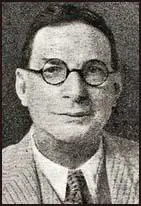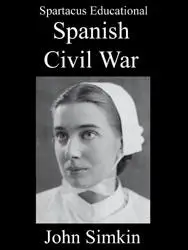Hyacinth Morgan

Hyacinth Bernard Wenceslaus Morgan was born on 11th September 1885. His parents, Roman Catholics from Ireland, were living in Grenada at the time.
After being educated in local schools he found work in the Civil Service. In 1904 he left the island after winning a scholarship to study medicine at Glasgow University. While a student he joined the Fabian Society and founded a Irish Nationalist Club in Glasgow.
Morgan graduated in 1909 and after working at a Glasgow mental hospital he joined the Royal Army Medical Corps during the First World War and served on the Western Front as a doctor.
In 1919 Morgan established a GP practice at Greenwich. He was an active member of the Labour Party and stood unsuccessfully for North Camberwell in the 1922 General Election. Morgan tried again the following year and was only beaten by 88 votes. He won the seat in the 1929 General Election with a 2,500 majority.
In 1930 Morgan joined forces with Charles Brook and Christopher Addison and other left-wing doctors to establish the Socialist Medical Association. The main objective of the organisation was to establish a National Health Service in the United Kingdom. It also campaigned in favour of health centres and salaried general practitioners.
The election of the Labour Government coincided with an economic depression and Ramsay MacDonald, the prime minister, was faced with the problem of growing unemployment. MacDonald asked Sir George May, to form a committee to look into Britain's economic problem. When the May Committee produced its report in July, 1931, it suggested that the government should reduce its expenditure by £97,000,000, including a £67,000,000 cut in unemployment benefits. MacDonald, and his Chancellor of the Exchequer, Philip Snowden, accepted the report but when the matter was discussed by the Cabinet, the majority voted against the measures suggested by May.
Ramsay MacDonald was angry that his Cabinet had voted against him and decided to resign. When he saw George V that night, he was persuaded to head a new coalition government that would include Conservative and Liberal leaders as well as Labour ministers. Most of the Labour Cabinet totally rejected the idea and only three, Philip Snowden, Jimmy Thomas and John Sankey agreed to join the new government. MacDonald was determined to continue and his National Government introduced the measures that had been rejected by the previous Labour Cabinet. Labour MPs were furious with what had happened and MacDonald was expelled from the Labour Party. In October, Ramsay MacDonald called an election. Disillusioned with the behaviour of MacDonald he decided not to stand in the 1931 General Election.
Hyacinth Morgan was an expert on industrial health problems and after leaving the House of Commons he was appointed Medical Adviser to the Trades Union Congress and served on numerous British Medical Association committees. He also worked as a GP in Camberwell.
In July 1936, Isabel Brown, at the Relief Committee for the Victims of Fascism in London, received a telegram from Socorro Rojo Internacional, based in Madrid, asking for help in the struggle against fascism in Spain. Brown approached the Socialist Medical Associationabout sending medical help to Republicans fighting in the Spanish Civil War.
Brown contacted Hyacinth Morgan, who in turn saw Dr Charles Brook. According to Jim Fyrth, the author of The Signal Was Spain: The Spanish Aid Movement in Britain, 1936-1939 (1986): "Morgan saw Dr Charles Brook, a general practitioner in South-East London, a member of the London County Council and founder and first Secretary of the Socialist Medical Association, a body affiliated to the Labour Party. Brook, who was a keen socialist and supporter of the people's front idea, though not sympathetic to Communism, was the main architect of the SMAC. At lunch-time on Friday 31 July, he saw Arthur Peacock, the Secretary of the National Trade Union Club, at 24 New Oxford Street. Peacock offered him a room at the club for a meeting the following afternoon, and office facilities for a committee."
At the meeting on 8th August 1936 it was decided to form a Spanish Medical Aid Committee. Dr. Christopher Addison was elected President and the Marchioness of Huntingdon agreed to become treasurer. Other supporters included Leah Manning, George Jeger, Philip D'Arcy Hart, Frederick Le Gros Clark, Lord Faringdon, Arthur Greenwood, George Lansbury, Victor Gollancz, D. N. Pritt, Archibald Sinclair, Rebecca West, William Temple, Tom Mann, Ben Tillett, Eleanor Rathbone, Julian Huxley, Harry Pollitt and Mary Redfern Davies.
Leah Manning later recalled: "We had three doctors on the committee, one representing the TUC and I became its honorary secretary. The initial work of arranging meetings and raising funds was easy. It was quite common to raise £1,000 at a meeting, besides plates full of rings, bracelets, brooches, watches and jewellery of all kinds... Isabel Brown and I had a technique for taking collections which was most effective, and, although I was never so effective as Isabel (I was too emotional and likely to burst into tears at a moment's notice), I improved. In the end, either of us could calculate at a glance how much a meeting was worth in hard cash."
The First British Hospital was established by Kenneth Sinclair Loutit at Grañén near Huesca on the Aragon front. Other doctors, nurses and ambulance drivers at the hospital included Reginald Saxton, Alex Tudor-Hart, Archie Cochrane, Penny Phelps, Rosaleen Ross, Aileen Palmer, Peter Spencer, Patience Darton, Annie Murray, Julian Bell, Richard Rees, Nan Green, Lillian Urmston, Thora Silverthorne and Agnes Hodgson.
According to Jim Fyrth, the author of The Signal Was Spain: The Spanish Aid Movement in Britain, 1936-1939 (1986): "In the spring of 1937 the International Fund opened a 1,000-bed military hospital in a former training college at Onteniente, between Valencia and Alicante. With four operating theatres, eight wards, a blood transfusion unit and the most up-to-date equipment, it was described by Dr Morgan, the TUC Medical Adviser, as being the most efficient hospital in Spain."
Members of the Labour Party became concerned about the way the Communist Party of Great Britain had taken control of the Spanish Medical Aid Committee. Therefore, in August 1937 Hyacinth Morgan went to Madrid to consult the Ministry of Health, and it was agreed that the Socialist Medical Association should finance and support a 500-bed base hospital, with a bacteriological laboratory supplied by the Holban Medical Aid Committee.
Morgan won Rochdale in a by-election during the early stages of the Second World War. He held the seat in the 1945 General Election. The following year he was appointed as a member of the Confederation of Health Service Employees (COHSE) National Executive Committee.
With the Labour Party suffering from a decline in support, Morgan decided to move to the safer Warrington seat in the 1950 General Election. He held the seat in the 1951 General Election. However, he decided not to stand in the 1955 General Election.
Hyacinth Bernard Wenceslaus Morgan died on 7th May 1956.
Primary Sources
(1) Paul Preston, The Guardian (8th April 2004)
On August 8 1936, a group of doctors, medical students and nurses met in London to consider ways of sending medical help to the Spanish republic. A month earlier, the civil war had broken out. One of those at the meeting was a young doctor, Reggie Saxton, who has now died aged 92.
Out of that meeting came the Spanish Medical Aid Committee and, on August 23 the first unit left for Spain. The English hospital was set up in a farmhouse at Grañen in Hesca, about 18 kilometres behind the Aragón front.
On September 29 1936, Reggie reached Grañen, where, he recalled, "there was only dirt and filth and rats and a stinking courtyard". Reggie became a popular figure at the Grañen hospital, dispensing poultices and pills from his knapsack, but was itching to help the war effort at a time when the main fighting was moving elsewhere.
(2) Jim Fyrth, The Signal Was Spain: The Spanish Aid Movement in Britain, 1936-1939 (1986)
The other consequence of the Spanish appeal was the SMAC. Isabel Brown asked Sinclair-Loutit and another student to see Dr Hyacinth Morgan, the Medical Adviser to the TUC and Medical Officer to the Union of Post Office Workers. At a second meeting he agreed to do what he could to set up a committee. Morgan was a wise choice. He not only had close connections with the Labour and trade union movements, but was also a Roman Catholic, having been born of Irish parents in the West Indies.
Morgan saw Dr Charles Brook, a general practitioner in South-East London, a member of the London County Council and founder and first Secretary of the Socialist Medical Association, a body affiliated to the Labour Party. Brook, who was a keen socialist and supporter of the people's front idea, though not sympathetic to Communism, was the main architect of the SMAC. At lunch-time on Friday 31 July, he saw Arthur Peacock, the Secretary of the National Trade Union Club, at 24 New Oxford Street. Peacock offered him a room at the club for a meeting the following afternoon, and office facilities for a committee. Although it was the first day of the Bank Holiday weekend, Brook managed to summon a number of people by telephone and postcard and to bring the press. (Those present variously recall between twenty and sixty people being there.)
Brook spoke of the need for medical aid. It was agreed to set up a committee and to send personnel as well as medical supplies to Spain. The committee had a people's front character. Morgan was elected Chairman and Brook Secretary. Isabel Brown, mindful of the English love of titles, proposed Christina, Lady Hastings (Marchioness of Huntingdon), a left-wing, Italian-born aristocrat, as Treasurer. With her, Viscount Churchill and J.R. Marrack, Professor of Biochemistry at Cambridge, were joint Treasurers. Dr Somerville-Hastings, a surgeon and a member of the LCC, was Vice-Chairman, and Dr Christopher Addison MP, was President. Most of the Committee were doctors, members of the Socialist Medical Association, including Philip D'Arcy Hart, who had been on holiday in Spain, marooned in San Sebastian during the initial fighting and evacuated in a British destroyer. Isabel Brown handed up £50 from her committee, and was elected. So were Ellen Wilkinson MP, Leah Manning, President of the National Union of Teachers, and Arthur Peacock. Lord Faringdon, a left-wing Labour peer and Frederick Le Gros Clark, a well-known nutrition expert and peace campaigner who had been blinded in the First World War, were among those co-opted. Later members of the committee included Janet Vaughan, Professor Julian Huxley, Victor Gollancz and Sir Walter Layton, owner of the News Chronicle, Megan Lloyd George MP, D.N. Pritt MP, Eleanor Rathbone, Independent MP for the Combined English Universities, the Earl of Listowel, Sir Archibald Sinclair MP, leader of the Liberal Party, Rebecca West and the veteran leader of the 1889 dock strike, Ben Tillett. William Temple, Archbishop of York, later of Canterbury, gave his support.

